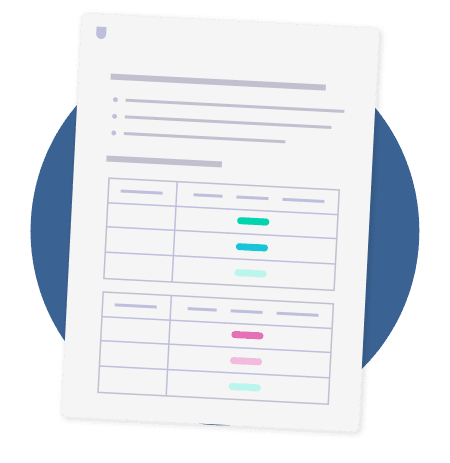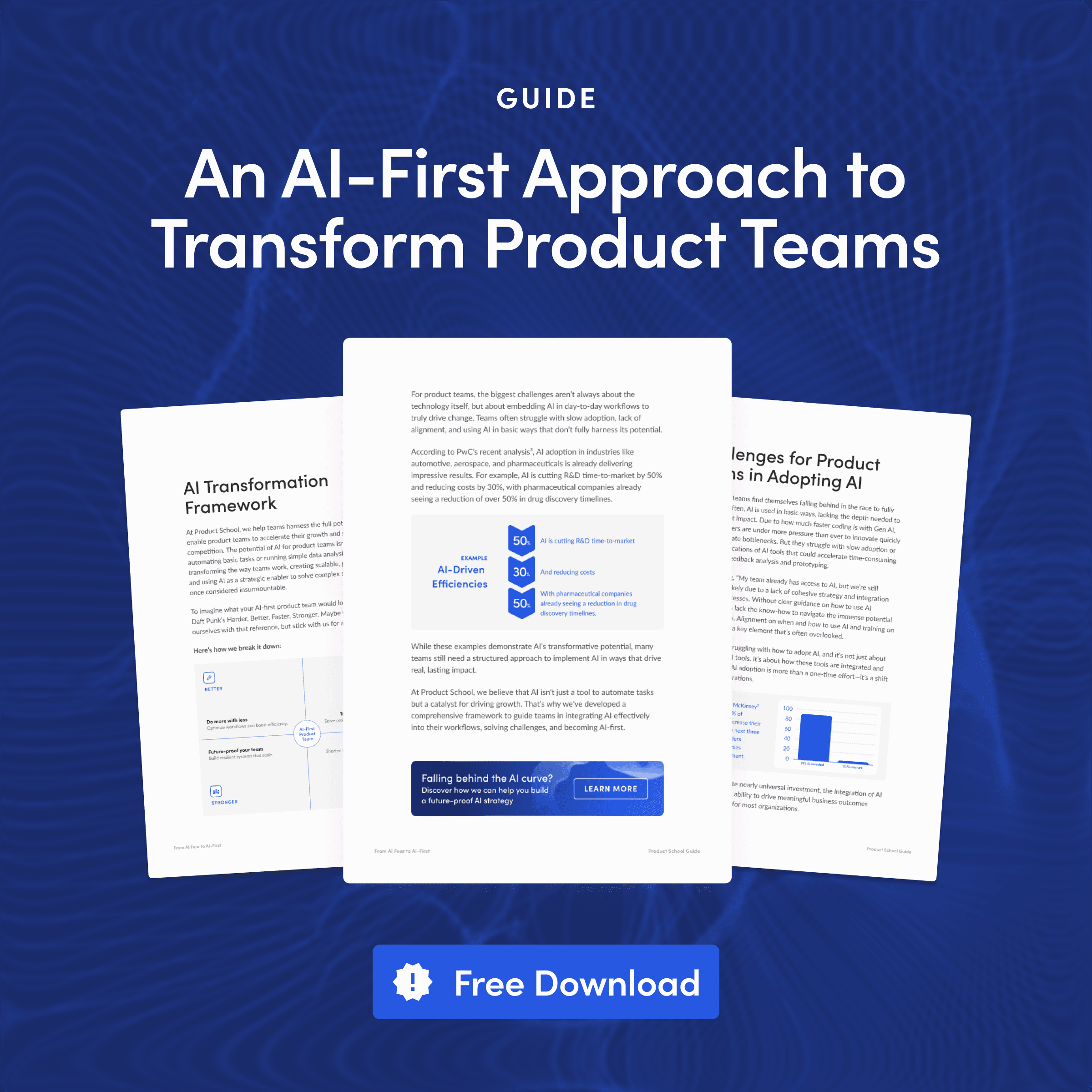Updated: October 9, 2024- 9 min read
The CIRCLES method is considered one of the top product management frameworks. It is a tour de force with all the key considerations product managers need to consider before developing and designing new products. Developed by Lewis Lin, author of Decode and Conquer, it can also be a great framework for aspiring PMs looking to nail the product sense interview.

Key Components of the CIRCLES Framework in Product Management
C - Comprehend the Situation
It might seem obvious, but in a high-pressure environment where everyone is under a deadline and your high-ups have only 15 minutes between very important meetings to brief you…truly comprehending the situation is easier said then done.
In the context of a product design interview, Lewis Lin recommends comprehending the situation by:
Clarifying the goal: Is a product update meant to increase revenue? Stickiness? Once you know the goal, you can decide which metrics to measure success by. For example, if increased engagement is the goal, then time spent on site might be a good metric to measure.
Understand constraints
Understand the context. What is it? Who is it for? Why do people use the product?
A CIRCLES Method Example in Product Management: Google Assistant
A prime example of a company effectively comprehending the situation is Google's development of the Google Assistant. Recognizing the growing demand for smarter, more intuitive virtual assistants, Google analyzed the broader context: the increasing integration of technology in daily life, the need for seamless user experiences, and the competitive offerings from other tech giants like Apple's Siri and Amazon's Alexa.
I - Identify the Customer
Determining the product's target audience is essential to ensure the product meets the specific needs and preferences of its users. It involves defining who the product is for, and understanding their characteristics, behaviors, and pain points.
Example: Netflix's Audience Segmentation
Product leaders at Netflix excel in identifying their customer base through sophisticated audience segmentation. By analyzing viewing habits, demographic data, and preference patterns, Netflix categorizes its users into distinct segments. This deep understanding allows for highly personalized content recommendations, enhancing user satisfaction and engagement.
Free User Persona Template
Get to know your users to build the right solution for the right audience.
Get Yours Now
R - Report Customer Needs
Outlining the target audience's specific needs is a pivotal step that involves gathering and listing the essential requirements and desires of the user base. This step ensures that the product development is aligned with what the users truly want and need.
Creating use cases that align with each user persona ensures that
Real-world example: Spotify's Personalized Music Discovery
Spotify stands out for its ability to pinpoint and cater to its users' unique music preferences so that they never run out of new tracks to stream. Through features like Discover Weekly and Daily Mix, Spotify leverages vast data analytics to curate personalized playlists that resonate with individual tastes.
Spotify’s original value proposition was music streaming, and it could have stopped once it had the rights to the music and an interface that allowed people to listen to their favorite bands. But Spotify understood that people also need help finding new favorites, and that it was in a unique position to offer new suggestions based on listeners’ personal data in a way that traditional record labels never could.
Free Value Proposition Canvas
Learn how to take user problems as the foundation of your solution and only build products that matter with our free Value Proposition Canvas!
Get Yours Now
C - Cut (via prioritization)
As a great bumper sticker once said, “you can do anything, but not everything.” Customers need a lot of things, which is why it’s crucial to prioritize those needs based on factors such as feasibility, impact, and alignment with business goals. This step ensures that the most critical and impactful features are developed first, optimizing resource allocation and maximizing product value.
Which prioritization method will you use to decide the most important 3-5 features in your product backlog?
Example: Intercom & the RICE method
Intercom is known for developing the RICE method to evaluate the Reach and Impact of a given feature and their Confidence in their estimate, balanced against how much Effort is going to go into the feature.
For example, Intercom recently released a new product: a customizable AI Chatbot. To decide on this, they would have determined that AI chatbots have a wide reach, i.e. a broad appeal and pique interest among customers. They have a high impact, meaning that they have a real effect on the clients’ business outcomes. They were confident in these assessments, and, crucially, the effort to build this AI-powered product didn’t outweigh the benefits of doing so.
L - List Solutions
Brainstorming potential features or solutions is a creative phase where teams generate a range of ideas to enhance product value and solve user needs. This process involves considering various technological advancements, user feedback, and competitive insights to ideate innovative features.
In a product management interview, Lin suggests coming up with at least 10 ideas. The more ideas you come up with, the more likely you are to land on a great one!
Product Example: Amazon Alexa
Amazon's integration of its voice assistant, Alexa, into household devices turned ordinary home appliances into smart devices, facilitating a seamless smart home experience. By leveraging voice commands, users can control lights, thermostats, and even security systems effortlessly, making daily routines more convenient. Amazon needed a wide ecosystem to work with if its integration was going to be effective. To get there, just imagine how long Amazon PMs’ list of solutions had to have been!
E - Evaluate Trade-offs
Assessing the pros and cons of each proposed solution is a critical step in the decision-making process. It involves weighing the benefits of each solution against its potential drawbacks, considering factors like cost, implementation complexity, and potential impact on user experience. This evaluation ensures that the final decision aligns with strategic goals and user needs.
No solution is without its trade-offs. The important thing to evaluate is whether or not the drawbacks don’t imply an irresponsible level of risk or actively work against the overall business strategy.
Real-World Example: Facebook's News Feed Algorithm Adjustments
Facebook frequently tweaks its algorithm to balance user engagement with content quality and relevance. One notable algorithm update aimed to prioritize content from friends and family over that from businesses and news outlets, intending to enhance the quality of interactions and time spent on the platform.
However, this decision also presented trade-offs, such as reduced reach for businesses and news outlets. In the end, Meta decided this trade-off aligned with its overall business objectives.
S - Summarize Recommendations
Concluding with the most suitable solution involves synthesizing the insights gathered through the earlier steps of the CIRCLES method to recommend a strategic direction. This final step is about presenting a coherent and justified recommendation that aligns with the user needs, business goals, and feasibility assessments conducted during the evaluation phase.
Using Microsoft's Windows 10 Updates as an example:
Imagine you’re working at Microsoft's on a strategic approach to Windows 10 updates. Previous updates have introduced features like Timeline for better productivity, improved security protocols, and user-friendly design tweaks, all aimed at addressing user needs while pushing the envelope of OS capabilities. You’ll want to highlight security enhancements, improved user experience, and new functionalities inspired by user feedback and new tech capabilities.

Applying the CIRCLES Method in Product Management to an AI-Powered Chatbot
1. Comprehend the Situation
In this initial step, the focus is on clarifying the goal for the AI chatbot—whether it's to cut costs, enhance productivity, generate customer delight, or both.
Identifying the right metrics for success is crucial; for instance, measuring escalation rate to higher levels of customer support.
Understanding the constraints and context within which the chatbot operates is essential—this includes an evaluation into the requirements for building AI-powered features using LLMs.
AI PRD Template
Plan, strategize, and align stakeholders around the key requirements unique to AI products.
By sharing your email, you agree to our Privacy Policy and Terms of Service

2. Identify the Customer
This AI chatbot is for e-commerce platforms and boutique shops. These entities are the primary customers, seeking to enhance their customer service and streamline operations. By identifying these specific segments as the target audience, the chatbot can be tailored to meet the unique demands of online retail, offering personalized assistance and support to shoppers, and addressing common queries efficiently, thereby improving the overall shopping experience.
AI User Flow Template
Essential steps applied to real-world examples from AI product management break down a complicated process into clearly defined flows from the initial entry point to the generated output.
DOWNLOAD FOR FREE
3. Report Customer Needs
For e-commerce platforms and boutique shops utilizing the AI chatbot, the paramount customer needs include:
Providing round-the-clock service to cater to customers across different time zones
Effectively handling common queries to reduce wait times and enhance customer satisfaction
Offering shopping assistance to guide users through product selections and purchasing processes
4. Cut Through Prioritization
Prioritizing for the AI chatbot development focuses on speed to ensure rapid responses and transactions, ease of integration with existing e-commerce platforms, and scalability to accommodate growing user bases.
AI chatbots can also enhance the customer experience by providing real-time updates on product availability, tracking deliveries, and even gathering customer feedback to inform inventory management strategies. However, these features will remain in the feature backlog for now while the other are prioritized.
5: List Solutions
To meet the identified needs and priorities, the AI chatbot will incorporate natural language processing (NLP) to interpret and respond to user queries naturally, e-commerce platform compatibility to seamlessly integrate with various online retail systems, and will be enhanced using a Retrieval Augmented Generation (RAG) system that incorporates the entire product inventory.
Level up on your AI knowledge
Based on insights from top Product Leaders from companies like Google, Grammarly, and Shopify, this guide ensures seamless AI adoption for sustainable growth.
Download Guide
6: Evaluate Trade-offs
Incorporating advanced AI capabilities, such as sophisticated NLP and personalized recommendations, requires significant resources. The trade-off here involves balancing the desire for advanced functionalities with the practical considerations of development time, cost, and system complexities.
7. Summarize Recommendations
The final recommendation is to develop a scalable, user-friendly AI chatbot that emphasizes quick and accurate responses, easy integration with existing e-commerce platforms, and the ability to provide personalized shopping experiences. This approach prioritizes critical features that add immediate value while allowing for future enhancements to adapt to emerging trends and technologies in e-commerce.
They say circles are the strongest shape, and the CIRCLES method greatest strength lies in its well-roundedness. It takes a holistic view of a product's journey from the context that brings it into existence to the final tweaks that will make it a success.
Updated: October 9, 2024




